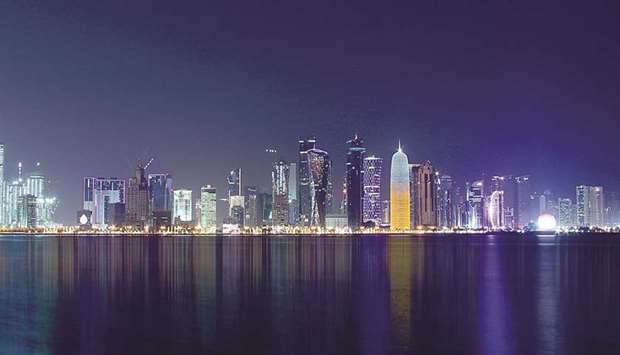Qatar’s GDP per capita will increase steadily and scale up to $71,087 in 2025, according to researcher FocusEconomics.
This year, the country’s GDP per capita will amount to $61,223, FocusEconomics noted in a consensus forecast.
Next year, it will be $64,331, $66,101 in 2023 and $68,600 (2024).
Qatar’s GDP, FocusEconomics said will exceed $200bn by 2025. This year, the researcher’s consensus forecast is $172bn, $181bn (2022), $186bn (2023), $194bn (2024) and $202bn (2025).
The country’s fiscal balance (as a percentage of the GDP) will be 2.7 this year, 4.2 (2022), 3.9 (2023), 3.6 (2024) and 3.4 (2025).
Qatar’s public debt (as a percentage of the GDP) will also reduce gradually until 2025, FocusEconomics’ consensus forecast show. This year it will be 64.7, 60.2 (2022), 58.4 (2023), 56.3 (2024) and 54.3 (2025).
The researcher’s consensus forecast on Qatar’s current account balance (as a percentage of the GDP) is as follows: 5.2 (2021), 4.9 (2022), 4.9 (2023), 6.4 (2024) and 8.0 (2025).
Qatar’s merchandise trade balance, according to FocusEconomics’ consensus forecast will scale up to $55.1bn in 2025. This year it will be $41.4bn, $41.1bn (2022), $46.2bn (2023) and $51bn (2024).
The researcher’s consensus forecast on country’s inflation (based on CPI) is 1.5% this year,
The country’s unemployment (as a percentage of active population), FocusEconomics said would remain at a meagre 0.2 until 2025.
After shrinking in annual terms in Q1, Qatar economy’s year-on-year performance likely improved in Q2 on a favourable base effect, FocusEconomics said.
However, underlying momentum in the non-energy sector was constrained by tougher Covid-19 restrictions early in the quarter, as suggested by falling PMI readings in April and May.
Meanwhile, signs from the energy sector were mixed, with mining and quarrying output falling sharply in June after expansions in April and May.
Moving to Q3, activity appears to be gaining steam thanks to the progressive easing of restrictions from late May amid a rapid vaccination campaign, with the PMI marking an 11-month high in July.
According to FocusEconomics the economy should return to growth this year as foreign demand strengthens and looser restrictions at home aid domestic activity.
Investment in the energy sector and easing tensions with Gulf neighbours should also provide support. However, the potential snapback of restrictions amid new variants of Covid-19 poses a downside risk.
FocusEconomics panelists see a 2.7% rise in GDP in 2021, which is unchanged from last month’s forecast, before growth of 3.9% in 2022.
Inflation rose to 3.1% in July from 2.0% in June. Price pressures should be notably higher this year than last due to higher food and energy costs, recovering activity and a supportive base effect.
The panelists see consumer prices rising 1.5% in 2021, which is up 0.1 percentage points from last month’s forecast. In 2022, it sees inflation averaging 2.4%.


